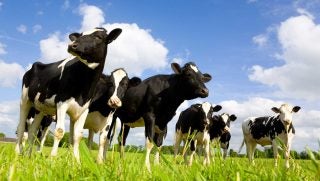Back in 2002, I set my eyes on Capitol Hill. As a self-professed ag policy wonk, I had already worked in the New York State Assembly and was looking to scale up. The vibe of D.C. was beckoning, and along with it, an internship in the U.S. Senate. A stepping stone to cement myself among the D.C. natives! Starry eyed and laughably naive, I was eager to get started. One complication — the Hart Senate Office building had just received an infamous letter — one laced with anthrax.
Welcome to the post 9/11 order, the “new normal.” Since then, we’ve become accustomed to terms like dirty bombs, IED’s, and DDoS attacks (think cybersecurity!). Population centers get the most bang for the terrorist buck, right?
Here in the country, we fancy ourselves insulated. No way would extremists even consider an attack. We’re the anti-metropolis. Just a collection of sleepy towns punctuated by cows, corn, and soybeans. What havoc could they wreak in our backyard? Too much effort, too little yield.
But this laid back exterior underscores a troubling reality. America’s heartland is a perfect staging ground. The most innocuous setting for the most insidious brand of terrorism — agroterrorism. The armory? Stocked with an ensemble cast of living armaments. Each a model enemy combatant, singularly focused on completing the mission. Take your pick from a motley crew of critters, including bacteria, fungi, viruses, and insects. Release just a few and you have a self-sustaining insta-population.
Former Secretary of Health and Human Services Tommy Thompson best summed things up as follows: “For the life of me, I cannot understand why the terrorists have not attacked our food supply because it is so easy to do” — he’s almost incredulous that nothing has happened yet. Is that a call to arms?
The CDC’s Select Agent list is a veritable who’s who of the most virulent animal, plant, and human pathogens. Imagine an extremist acquiring a sample and releasing it. Patient zero could literally be a single plant or head of livestock — an epicenter that would quickly radiate throughout the Ag Belt. Or what if they commandeered a crop duster and took a joyride?
Any stage in the food distribution continuum is potentially vulnerable. What would the aftereffects be? Consider the motivations of terrorists. Flout the conventions of war; everyone is a hard target. Incite panic, gnaw away at our sense of security and batter our resolve. Maximize psychological impact and shake confidence in the economy. The latter is no blip, we’re talking a cavernous crater. Shock and awe, except that we’re on the receiving end.
But compared to traditional acts of terror, just how common is an attack on our ag infrastructure and food systems? Two examples come to mind. In 1984, devotees of the Rajneeshee cult laced local salad bars with Salmonella, sickening about 750 individuals. In another case, eco-terrorists branding themselves “The Breeders” released Mediterranean Fruit flies in California. Both events were costly in their own right, but hardly earth shattering.
To look at the potential effects of agroterrorism, we can reference history. Consider the seismic effects (both social and economic) of some noteworthy, but non-agroterrorism related events. Remember the E. coli 0157:H7 spinach outbreak in 2006? It occurred on the West Coast, but had longstanding effects on East Coast producers (who were in no way involved). Guilt by association. A bullseye might as well have been emblazoned on the forehead of every spinach producer in the U.S. Also, consider the impacts of the Mad Cow, Avian Flu, and Swine Flu scares. All are textbook examples of things to come.
Agroterrorism is literally a Pandora’s Box — one that’s slightly ajar, but the floodgates haven’t (yet) opened. The sobering reality is that we aren’t ready. With the emerging field of synthetic biology, a designer organism can be developed from the ground up. Malicious parties can misuse science for their own nefarious ends. Fortunately, it’s still a challenge to actually weaponize and deliver an agent.
It’s often said that the Romans would salt the fields of their enemies. Whether or not this actually occurred is questionable, but the logic is sound. Agriculture is a tempting target. We need to appreciate the enormity of the situation and make preparations for the coming biological counter-insurgency.
Tim Durham’s family operates Deer Run Farm — a truck (vegetable) farm on Long Island, New York. As an agvocate, he counters heated rhetoric with sensible facts. Tim has a degree in plant medicine and is an Assistant Professor at Ferrum College in Virginia.



